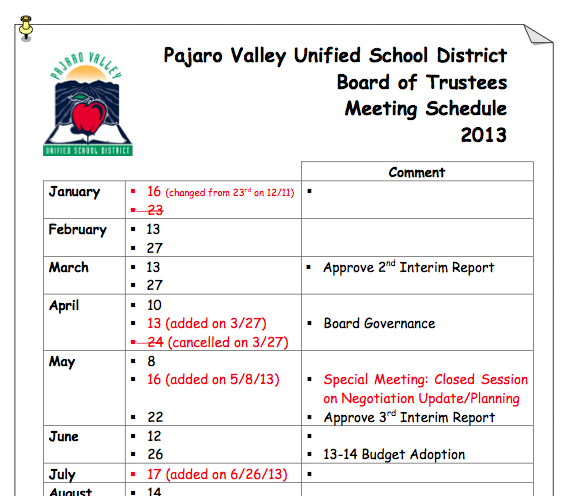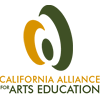Help District Leaders Understand How the Arts Can Contribute to LCFF Goals
 The Challenge: How can I ensure that my district leaders understand the valuable role arts education can play in reaching Local Control Funding Formula (LCFF) and Common Core goals?
The Challenge: How can I ensure that my district leaders understand the valuable role arts education can play in reaching Local Control Funding Formula (LCFF) and Common Core goals?
The Strategy: Present evidence to your local school board that connects the stated goals of LCFF and Common Core with the benefits of arts education.
The Story: On January 14, five members of the Santa Cruz Alliance for Arts Education (SCAAE) spoke at a local school board meeting.
Each spoke about the different benefits of arts education and the group as a whole represented a variety of backgrounds – parent, teacher, university professor and district arts coordinator – but all of them grounded their presentations in specific aspects of the Local Control Funding Formula and/or Common Core.
“LCFF and Common Core represent a huge shift in education policy for California, so there’s a big learning curve for all of us. We wanted to make sure that our presentations met school board members where they are right now by explaining the specific ways that arts education can help districts achieve new priorities,” said SCAAE coordinator, Sarah Brothers, who organized the presentations at Pajaro Valley Unified School District (PVUSD) board meeting.
Message points The SCAAE presentations included some of the following message points:
- The district’s accomplishments around arts education: Lyn Olson, The GATE and VAPA Coordinator for PVUSD, recognized community partners and recent accomplishments, thanking board members for their hard work and reminding them of their commitment to the arts.
- The current status of arts education in the district: Lyn Olson’s presentation also provided a snapshot of credentialed class numbers by school in district, which can be very helpful as school board members may not know exactly how much and how often students have access to the arts.
- The arts improve literacy for English language learners
- The essential role of the arts within Common Core: Advocates included a quote from David Coleman, the architect of Common Core, which articulates the importance of the arts within the new content standards:
“Students cannot successfully meet the CCSS ELA standards without engaging in the arts. Teachers cannot successfully implement the CCSS ELA standards without imbedding the Arts in their instruction.”
According to Sibyl O’Malley, Director of Communications and Community Engagement at the California Alliance for Arts Education, “When you lay out the stated priorities of LCFF with a list of the documented benefits of arts education, you see immediately that there is a great deal of overlap. For years, research has documented the positive impact the arts have on school climate, student achievement, parent involvement and improved outcomes for underserved students.”
The California Alliance for Arts Education has created tools and training to help local advocates understand these new policies and the meaningful contribution that the arts can make to improve outcomes for all students. The toolkit includes a template for a 3-minute school board presentation and a webinar with training on how to personalize it for your community.
Best practices: Santa Cruz advocates did a lot of things right. Here are some extra ideas and tips to make your presentation a big success.
- School board members aren’t your only audience: SCAAE presenters brought enough materials for all school board members and public attendees because it’s an opportunity to educate and align with other stakeholders at the meeting.
- Present facts together with district-specific examples and personal stories: Speakers offered concrete facts, as well as compelling personal stories from students and classrooms in their district to illustrate the benefits of arts education. Lyn Olson’s presentation is peppered with PVUSD student artwork and provides citations for all research and policy information provided. Her presentation provides school board members with a stand-alone rationale for the arts in the shift to Common Core. Download her presentation here.
- Give others a way to show support: Advocates added weight to their presentation by asking others present to stand in support of the arts and got a lot of support!
- Be prepared to answer questions: And if you don’t have an answer, be honest and let them know you will get back to them.
- Make a concrete ask: Santa Cruz advocates gave their board members a specific request to consider: Update the PVUSD Arts Plan. Other requests might include investing districts funds in a VAPA Coordinator or in professional development for teachers. To learn the A-Z of arts education planning at the district level, check out the Alliance’s Insider’s Guide.
A big thank you to the amazing Santa Cruz team for sharing their work! They are members of our Local Advocacy Network, a statewide network of district-based advocacy groups that develops best practices for advancing arts education so that all students have access to the benefits the arts bring. If you need help with making a presentation – whether you are a beginner or a seasoned presenter – call or email Sibyl O’Malley at the Alliance.










